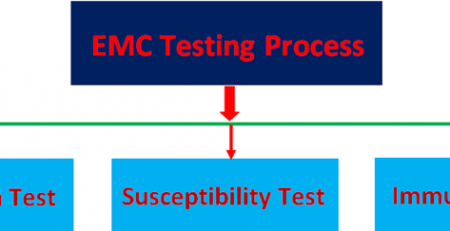Making Technology Strides and Preserving Natural Beauty, a Great Combination!
How valuable is satellite-provided broadband internet to the world? Is it worth those platoons of satellites providing the internet eclipsing the “view” of deep space objects from our research telescopes, which prefer darkness and radio silence for optimum performance? At this time there are at least 800 Low-Earth-Orbit satellites in space, ranging from the size of a table (SpaceX) to the size of a sandwich (Swarm Technologies) and a grand total of 2,218 satellites orbiting the earth currently. The FCC, the United States regulator of satellites, has given permission to SpaceX to launch 12,000 satellites, and they have already placed 422 in Low-Earth-Orbit. SpaceX has also filed paperwork to launch an additional 30,000 satellites in the future. The average orbiting life of one of these satellites is 1-5 years, at which time they fire their engine and leave earth orbit, burning up on re-entry to the atmosphere to ease the “clutter” of space junk currently orbiting the earth.
A number of Radio Frequency bands are widely protected by the FCC for Astronomy (those bands around the part of the emission spectrum where hydrogen emissions are located) that are of interest to scientists in areas where stars are forming. Radio Telescopes that explore deep space also experience RF(Radio Frequency) interference issues due to the uplink and downlink radio frequencies used by the satellites for data transmission. These frequencies can interfere or cancel certain frequencies that certain molecules in space emit. Since the signals emitted by the satellites are stronger than the deep space emissions, the astronomers are unable to observe the deep space frequencies clearly, meaning information that could normally be gleaned from the deep space frequencies will be lost in the static caused by the “Megaconstellation” of satellites. The satellites can also reflect radio transmissions originating from the Earth back to the Earth, again interfering with the Radio Telescope’s interpretation of the Radio Frequency emissions that it is focusing on.
Additionally, brightness caused by reflection of light from the Sun off of the reflective surface of the satellites causes optical interference for classic light-sensing refractory telescopes, interfering with the view of the heavens that humans have enjoyed for years.
The question comes down to the real need for these Low-Earth-Orbit satellites for internet service versus the ability to continue learning and gathering information about our Universe. We do have many adequate methods of internet access, so do we need this particular version of internet access possibly at the cost of further investigating the Universe? Have we “learned so much” about deep space that we don’t wish to learn more in the future?
SpaceX has not taken the concern of the astronomy world lightly, and has been working to mitigate this problem since it was first recognized. Originally, SpaceX proposed that the satellites be coated with a black, non-reflective surface on the side that is facing the Earth to mitigate this reflection problem in the future. They executed this strategy, called “DARKSAT”, and it reduced the visibility of the satellites by 55%. That solution had some problems from SpaceX’s viewpoint, as the black color caused some overheating and premature failure of the satellites.
SpaceX has announced a new method to try to cut down on the interference caused by the solar array, which is greatest when the satellite is in either its “parking orbit” right before being deployed and in its “orbit raising” phase as it climbs to its “operational orbit”. At that time, the solar arrays are deployed in front of the satellite to reduce atmospheric drag on the array, which is a cause of heat damage to the satellite. In that configuration, called the “open book configuration” the array acts like a large mirror, reflecting the light and increasing the satellite’s visibility on earth. In the new plan, the solar array will be deployed in a “Shark’s Fin” configuration once the satellite reaches operational orbit,with the edge facing the Sun so there will be less reflection of the light toward the Earth.
There are three problems for Spacex with this plan:
- 1) The solar array will not absorb as much light to adequately power the satellite.
- 2) Rolling the satellite to achieve this orientation will decrease the time that the antenna is oriented in the direction that allows satellite communication with the ground stations.
- 3) There will be times where it is harder to determine the satellite’s exact position as the side mounted cameras that use stars to determine the location of the satellite would be pointed directly at the Sun and Earth, making true positional information questionable.
The correction does leave the satellite’s white antenna as the main reflective issue present. Rather than darkening the white antenna of the satellite, SpaceX is also looking to shield the exposure of the white antenna to light with the use of a “visor”, which deploys after the satellite reaches orbit to stop the light from actually reaching the antenna, which should decrease or eliminate the light reflection issue.
In December of 2019, when I first considered writing this blog, there were many complaints from astronomers using telescopes and radio telescopes that satellite “Megaconstellations” were interfering with research that they were conducting. I started this post and then put it “on the shelf” for fairness reasons. The news story that inspired the post seemed to be directed AGAINST advancing technology for preservation of nature and scientific research, and I was inclined to agree.
It seems like SpaceX has been doing a diligent job of trying to make these satellites less obtrusive to research and personal astronomy. The benefits of satellites are many, from telecommunications, the internet, business, weather, national security, GPS, news, entertainment, and many others. SpaceX is also involved in NASA’s Artemis Project of landing a woman and a man on the Moon in 2024, with sustainable habitation and exploration by 2028, an eventual goal being a Mars mission. SpaceX’s “Starship” is expected to be a fully reusable rocket that will be able to carry both crew and payload into Earth orbit, to the Moon, and eventually to Mars. Considering SpaceX’s work on mitigating satellite interference and their recovery and re-use of booster rockets, SpaceX appears to be “a green company” when it comes to the terrestrial and space environments. We do have a lot of “space junk” orbiting the earth at this time, but it does sound like SpaceX is making some excellent progress in making that ” space junk” less obtrusive to natural beauty and scientific research. Maybe progress and nature can have a win/win and we get the best of both worlds in this issue!
 AND
AND 












Leave a Reply